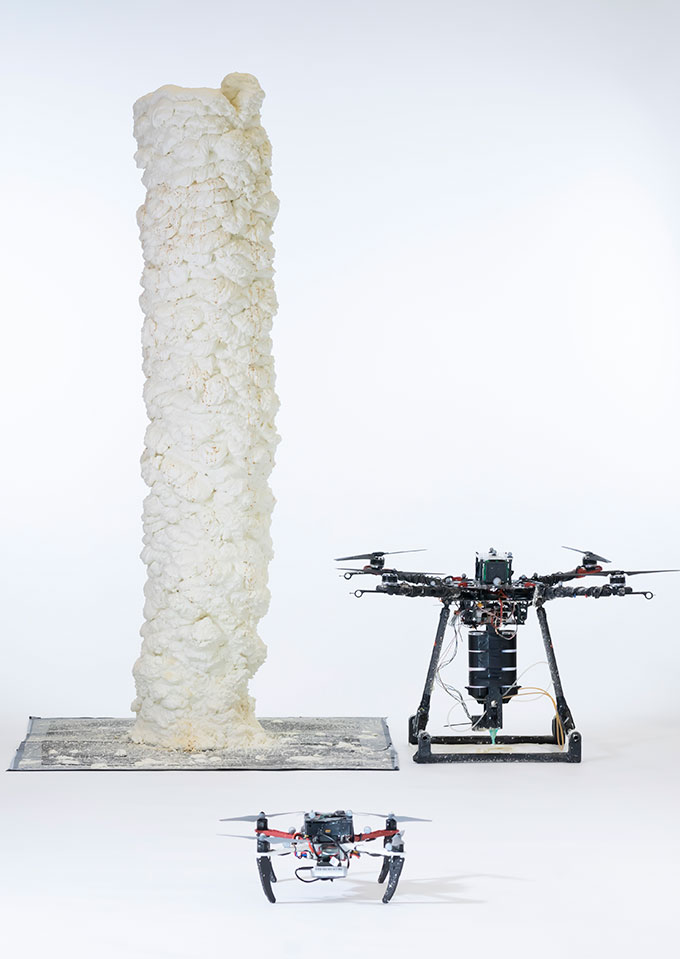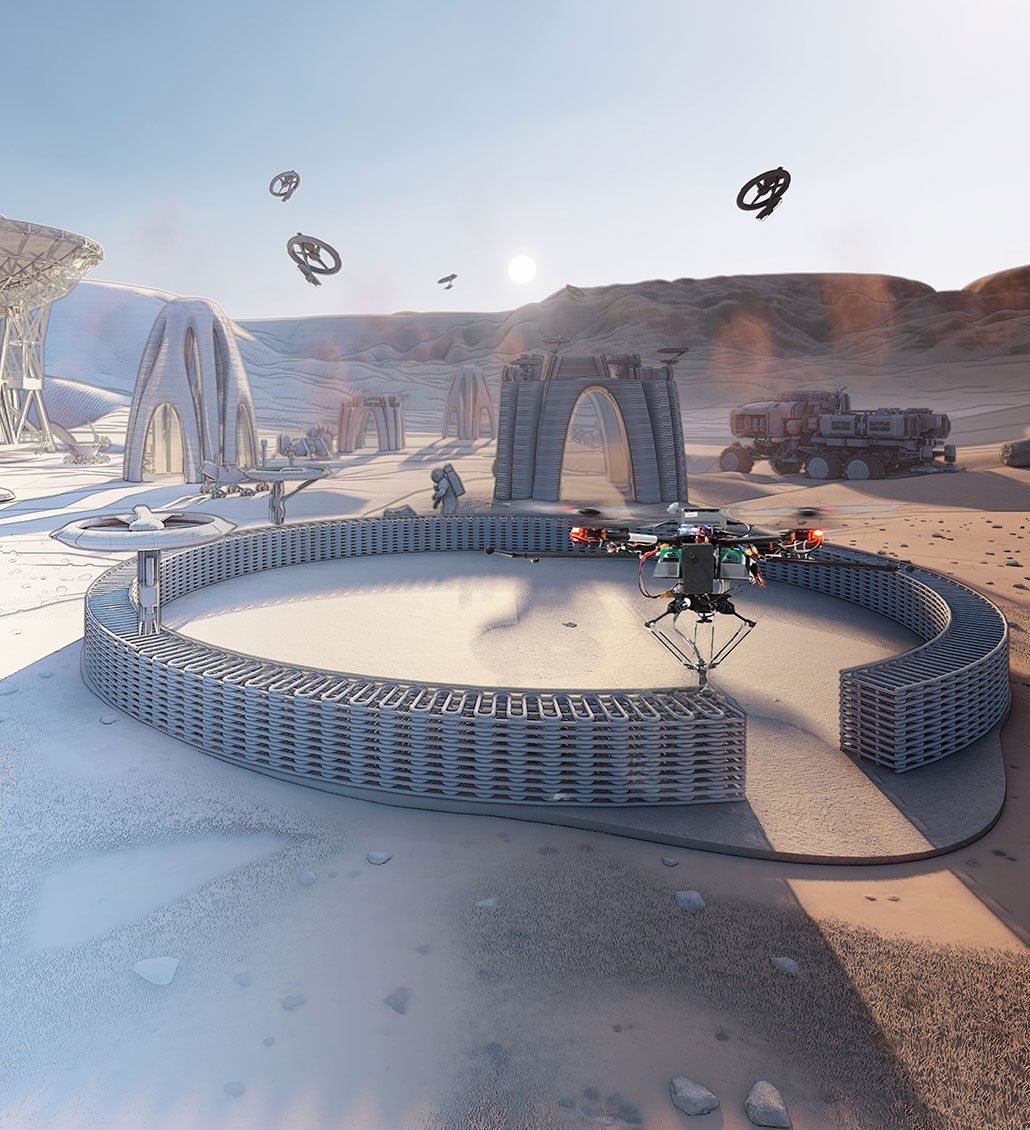Drones already fly and spy. Now, they can build too. For the first time, free-flying robots have 3-D printed structures. A pair of drones working together made a tower taller than a person. Engineers demonstrated this new method of 3-D printing in the lab. They shared their success in Nature on September 22.
Mirko Kovac, who co-led the research, says that animal builders inspired him. “Wasps are amazing,” he says. “Bees are incredible.” These insects work together in swarms to make nests much larger than themselves.
Kovac is a roboticist at Imperial College London in England. He also works at Swiss Federal Laboratories for Materials Science and Technology (Empa) in Dübendorf. His co-leader on this project was architect Robert Stuart-Smith of the University of Pennsylvania in Philadelphia and University College London in England.
Spraying foam and squirting cement
To print that person-sized tower, a Build-Drone carried expanding foam. This material rapidly expands and hardens when sprayed. As the drone flew in a slow circle, it sprayed the foam downwards to form layers. When it ran out of material, it flew away so a person could reload more foam or replace the drone’s batteries.

This type of foam tends to thicken unevenly. So, while Build-Drone was reloading, a second, smaller drone surveyed the work. It was called Scan-Drone. It looked for places where the last layer was too thin or thick. Then it created a plan for the next layer to help even things out. This kept the tower straight and sturdy.
The foam tower was cool, but the team wasn’t done. In a second demo, Build-Drones and Scan-Drones worked together to make a cylinder about the size and shape of a large round cake. This structure was impressive because the drones laid down a cement-like material very accurately, to within millimeters.
The cement-like material was special, too. Researchers at the University of Bath in England crafted it specially for the project. It had to be light enough for the drones to carry. It had to be soft enough for the drones to squirt it out easily. Yet it also had to harden quickly into a strong layer, Kovac said. The drones laid down this material in a twisting path that made the structure even stronger.
The researchers also did several virtual demonstrations. In one, real drones flew the paths they would take to build a dome but didn’t print any material. Other computer simulations showed how teams of as many as 15 drones might work together to build different kinds of structures.
A new way to build
“Nobody had really done this before,” says Rahul Panat. He is a mechanical engineer and 3-D printing expert at Carnegie Mellon University in Pittsburgh, Penn., who was not involved in the research.
This was “an impressive demonstration,” says Andrea Tagliabue, who also wasn’t involved in the research. As a graduate student in robotics at MIT in Cambridge, Mass., Tagliabue works on control systems for drones. However, he notes that the researchers still have challenges left to solve before 3-D printing drones are useful in the real world.
Since these drones built structures inside a lab, they didn’t have to contend with wind or other outdoor disturbances. Also, cameras placed around the room could help track the drones’ positions and send them along the correct paths. Outdoors, the drones would have to navigate without this extra help, says Tagliabue. He also notes that the more drones there are, the more computation is needed to keep them all coordinated. If that computation takes too long, the drones can’t get the instructions they need in real time.
With work, these problems can be solved. Kovac is already planning to do tests outdoors. He also plans to build more complex structures. And he plans to make it so the drones can recharge and reload automatically.
If construction drones could work together like wasps or bees, they could construct buildings or make repairs in places that are tough for human crews and heavy machinery to reach. That may include disaster areas, the tops of tall buildings or even other planets, Kovac says. “There’s a lot of interest in building on Mars with robots.”



